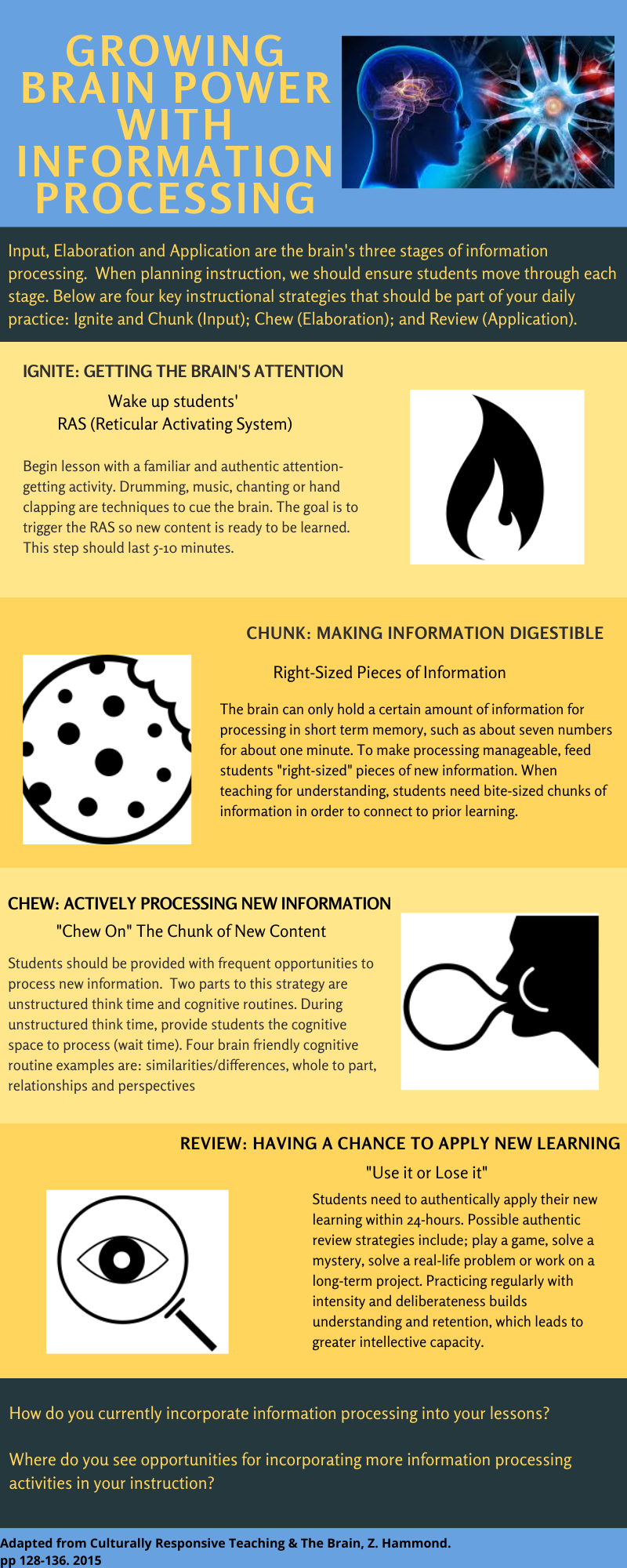Growing Brain Power with Information Processing
Guest User
Teachers are well-aware that the bread and butter of our craft is growing our students’ brain power. Most of us learned about the information processing stages (input, elaboration, and application) in our teacher preparation programs. However, we might not readily consider information processing to be a culturally responsive practice.
Zaretta Hammond tells us that mindfully incorporating these stages into our everyday lessons supports our culturally and linguistically diverse students by building intellective capacity. Indeed, these techniques “grow out of learning traditions of oral cultures where knowledge is taught and processed through story, song, movement. . .[which are] all forms of elaboration…” (2015, p. 127).
Today’s infographic provides an overview of four culturally responsive strategies that help students move through each information processing stage: Ignite, Chunk, Chew, and Review. As always, we encourage you to explore more specific examples through Hammond’s book, Culturally Responsive Teaching & the Brain (2015).
Hammond, Z. (2015). Culturally responsive teaching and the brain: Promoting authentic engagement and rigor among culturally and linguistically diverse students (pp. 22-24). Thousand Oaks, CA: Corwin, a SAGE Company.
